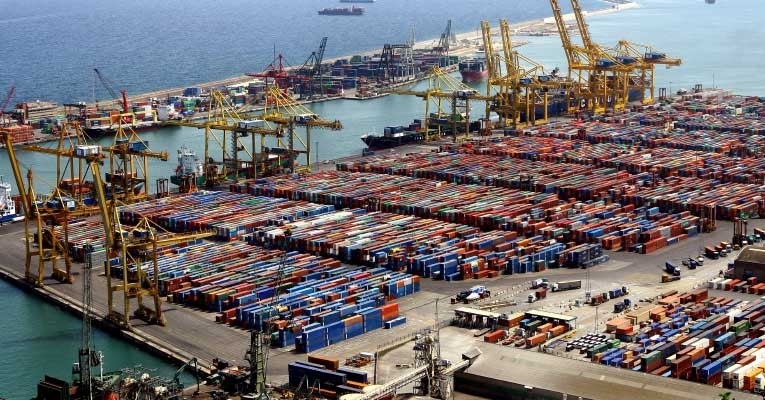A decade in logistics: before and after
As technology begins to take centerstage in global logistics, Nishith Rastogi, chief executive officer and founder of Locus.sh, reflects on the fascinating trends that will define logistics as much more than a support function.

As technology begins to take centerstage in global logistics, Nishith Rastogi, chief executive officer and founder of Locus.sh, reflects on the fascinating trends that will define logistics as much more than a support function.
In earlier days, logistics was only thought of as a function restricted to the military. The procurement of ammunition, the movement of the soldiers and the maintenance of facilities were the core components of logistics.
As markets developed and trade expanded, logistics became a function of day to day business. However, as important as the supply chains were, they were still considered a support function.
The emergence of supply chain management
Supply Chain Management (SCM) is a term that gained prominence over the last decade. SCM includes any and every activity from the procurement of raw material to the delivery of the goods. Perhaps even more importantly, supply chain managers are now responsible for coordinating and associating with third party members like service providers, suppliers, and other intermediaries. Even customer experience has become an integral part of the logistics function.
With supply chain management now comprising of so many individual functions, it is imperative that the old ways of functioning are no longer adequate for supply chain managers. The traditional method of using human intuition for making decisions no longer fits the bills. With businesses expanding their horizons, and consumer expectations on deliveries continuing to rise, supply chain managers now need AI-driven solutions that can empower them with accurate data to take business decisions.
These AI-driven logistics solutions often take historical data and real-world constraints like traffic, rider preferences, vehicle capacity, and customer’s preferred slots before providing optimum solutions. Not only can these solutions increase transparency and efficiency in the supply chain, but can also help organizations in realizing massive cost reduction in their operations.
Future trends in logistics:
As technology continues to take centre stage in logistics, here are the few trends we can expect in the next decade or so:
Logistics will be more consumer-centric
As businesses continue to make customer their king, so will their logistics. The consumer who is now used to home deliveries wants more and more say in how and when his orders are shipped. Not only will supply chains have to become more efficient, but they will also need to be more transparent with their customers. The supply chains of the companies will no longer function as well-kept secrets but as an enabler of information for consumers.
With the rise in demand for transparency, expect order tracking to advance multiple folds in the future. Live tracking, expected the time of arrivals (ETAs), and even product-related information would be norms that a consumer will expect from the last-mile delivery.
Pricing pressure will increase
As more and more competitors enter the market, pricing apart from ‘experience’ will become a key differentiating factor. With ‘deliveries’ becoming an integral part of a product cycle, companies will try and minimize the logistics costs to provide the customers with the pricing points they demand.
Modern technologies that reduce logistics spend by cutting through freight costs, labour charges, and other operational costs will become an integral part of every supply chain.
From multiple channels to ‘no channel’
The retail sector will move from using multiple channels for the operation to an integrated approach that will blur the line of these channels. The ‘omnichannel’ approach we know right now, will shift to a ‘channel less’ experience, where the customers will seamlessly move from one channel to other without even giving a conscious thought.
Organizations would need to gear up for such changes and ensure that their operations are specialized and not limited to only a particular channel.
From intuition-based to data-based
As discussed earlier, with companies going global and supply chains become more complex, companies will have to base their decisions on historical data and trends, rather than simply believing in the human mind. Look out for supply chains to adopt automation, not just on the physical front but also on the mental one where modern solutions will enhance the decision-making capabilities of supply chain leaders.
Tasks like sorting of packages, the creation of delivery plans, generating optimal sales beat plans, all will be automated to minimize human dependency.
‘Sudden crests and troughs’ in demand will reduce
Festival seasons or any unforeseen event leads to a sudden spike or downfall in the public demand. Currently, as the demand forecasting is done based on the past experience and intuition of the human mind, these abnormal situations often throw everyday planning out of the window.
As AI and deep learning take over, expect companies to be better prepared for these seasonal/ special circumstances. Accurate demand forecasting will not only help in providing customers with timely deliveries but will also help organizations in hiring the right amount of additional talent that they will require during these periods.
Logistics has come a long way from the procurement, maintenance, and transportation of military facilities to delighting customers with top-notch experiences. As the next decade arrives, expect logistics to include even more functions in itself and become more of a differentiating factor between organizations.



